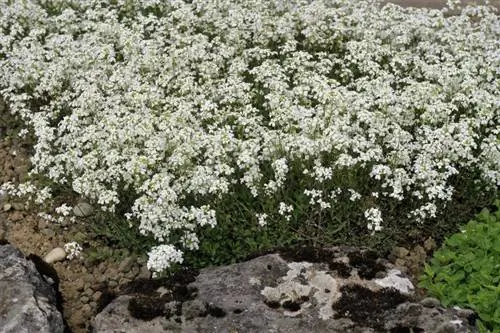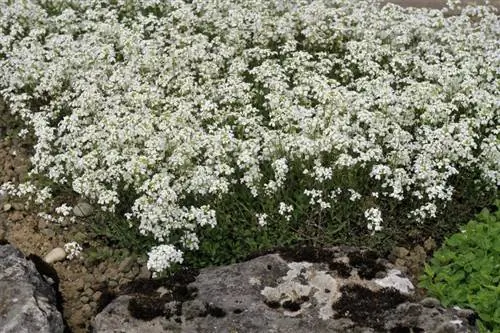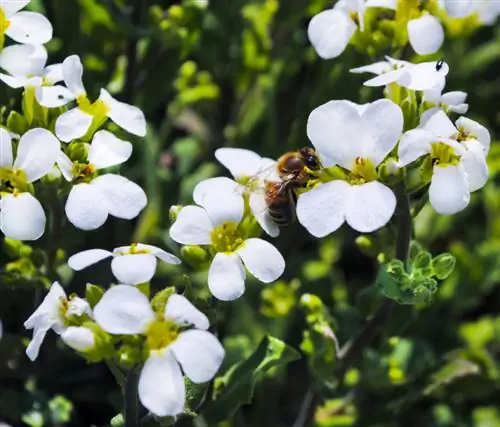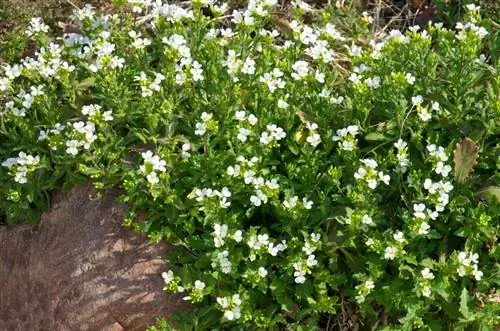- Author admin [email protected].
- Public 2023-12-16 16:46.
- Last modified 2025-01-23 11:20.
Very few perennials are as undemanding as goose cress. This specimen, which impresses with its cushion-like growth and delicate flowers, can get along almost alone in the right location and does not require any special care.

How do I best care for goose cress?
Caring for goose cress is uncomplicated: it needs little water and no fertilizer, is hardy and only needs pruning after flowering. Diseases and pests rarely occur when the location and weather are good.
Can goose cress tolerate drought and heat?
Watering the goose cress is especially important immediately after planting. Later, watering takes a back seat. Only in summer, when there is prolonged heat and drought, should the goose cress receive additional watering so that it does not dry out.
Remember to ensure good drainage when planting this perennial! The goose cress can tolerate short dry periods. However, it cannot cope with accumulated moisture and will quickly rot in the root area.
Can fertilizing be dispensed with?
Clearly: Yes. Goose cress does not need fertilizer to grow. However, if you want to give it a good start, give it some compost in the spring between February and March (€12.00 on Amazon). That's enough for the whole season.
Are there any potential diseases or pests?
Goose cress is usually he althy because it is characterized by a robust character. However, in unfavorable locations and in bad weather it can be affected by diseases such as downy mildew. Pests such as snails usually stay away from it. From time to time, weakened plants can become infested with aphids or gall midges.
Does the goose cress have to be overwintered?
Absolutely hardy - that's the goose cress. Most species and varieties can tolerate frost down to -25 °C. Therefore no winter protection is required. A few species such as Arabis blepharophylla are somewhat more sensitive to cold. They should be protected with brushwood from -10 °C.
When and how is pruning done?
This is what you need to consider when cutting:
- cut back the entire perennial after the flowering period
- cut by half or to 10 cm
- Episode No. 1: New flowers can develop
- Episode No. 2: The growth remains compact
- On smaller varieties, only cut away the spent flowers
- Plant parts are edible
Tip
To keep the goose cress strong, it should be divided every 2 to 3 years in late summer.






